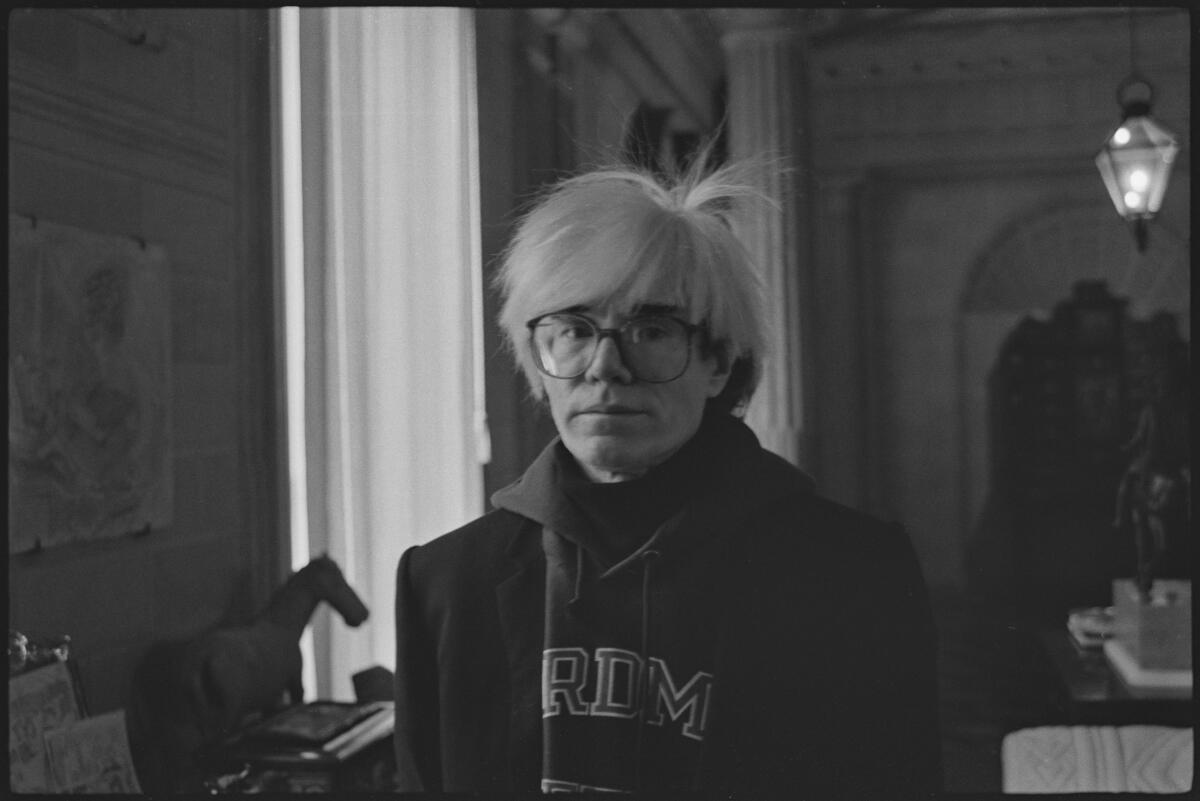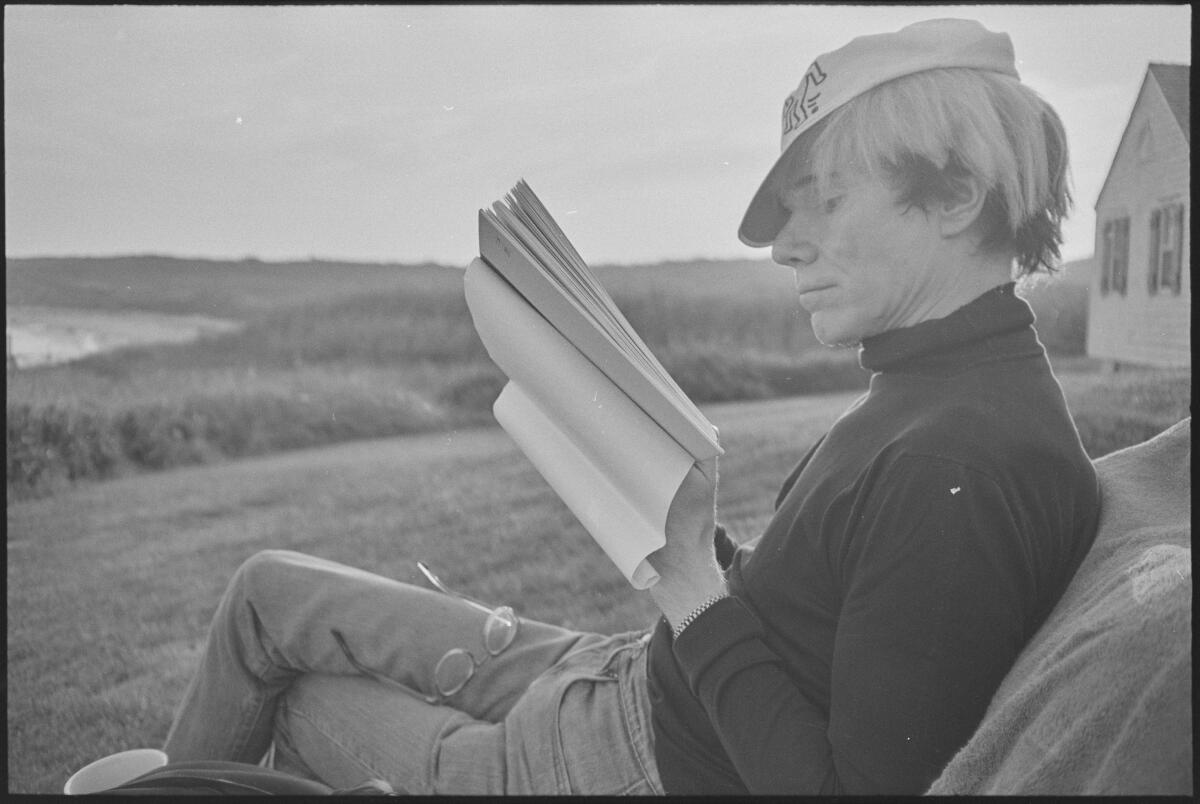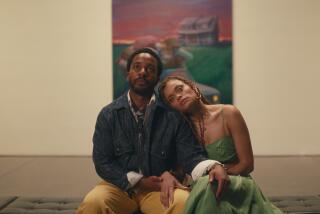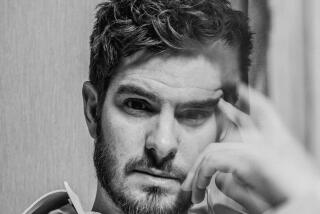Review: Netflix’s ‘The Andy Warhol Diaries’ is a love story, not an art story — and that’s why it works

- Share via
“The Andy Warhol Diaries,” a six-part documentary series launching Wednesday on Netflix, is not the place to go for enlightening interpretation and analysis of the paintings of soup cans, celebrities, tabloid news and disaster crack-ups, not to mention the racy films, that made Andy Warhol (1928-1987) an international sensation in the 1960s.
Most of what the series has to say in that regard is standard stuff about the intersection of commercial mass media and art, which, frankly, often misses the actual point of his incisive Pop brand. (The subject of his work is art culture, for example, not pop culture.) Fervent claims about his art’s unmistakable significance are magnified by boilerplate promotional fluff from art dealers, museum curators and others that, at this late date, hardly needs to be repeated about one of the 20th century’s most important — and famous — artists.
Really, is there anyone left to convince?
Instead, the excellent reason to watch must be tagged to something else entirely. Rather than an art story, “The Andy Warhol Diaries” unfolds as a love story.
Or to be more precise, several love stories.
Interior designer Jed Johnson, Paramount Pictures executive Jon Gould, painter Jean-Michel Basquiat — Warhol was in love with all three. The varied, deeply felt relationships he had with them over nearly 20 years form the poignant spine of the narrative.

Homosexuality in cruelly heteronormative American society during the decades after World War II is the documentary’s subject, framed by Warhol’s successes and failures in love. The damage inflicted on any profound same-sex relationship that attempts to navigate repressive and punishing social obstacles is amplified by the artist’s cultural centrality and celebrity status.
“The Andy Warhol Diaries” is based on the hefty 1989 book of the same title edited by Pat Hackett, a longtime confidant of the artist and co-author with him of “Popism: The Warhol ‘60s,” an inside account of his initial career. (She is among the documentary’s many interviewees.) Reportedly it began as daily record-keeping for tax purposes, meant to chronicle his ballooning expenses. Warhol was a hugely successful commercial artist — and quite rich from it, earning up to an inflation-adjusted $500,000 a year— before he threw a well-placed monkey wrench into a haughty and exclusionary art world.
Almost every morning between Nov. 24, 1976, and Feb. 17, 1987, five days before the artist’s untimely death from gallbladder surgery at 58, Hackett telephoned Warhol to transcribe his recitation of what he had done the day before. She culled the 807-page tome, filled with gossip, from 20,000 transcript pages.
For those with the stamina to read its seemingly endless trivialities of who went where, when, with whom; and what they wore, ate or burbled; and why the plumber never arrived to fix that broken bathroom faucet, the book was controversial. Its feints, dodges and sometimes outlandish observations courted autobiographical self-aggrandizement. (It has no index, so there’s no jumping to bold-faced names.) Artistically, the years it covers were largely fallow ones, compared with the virtuoso, revolutionary work of the 1960s.
Netflix producer Ryan Murphy and co-executive producers Dan Braun, Josh Braun, Stacey Reiss, Stanley Buchthal and writer-director Andrew Rossi (“Page One: Inside the New York Times”) narrowed the story’s focus. They drew on a vast trove of fascinating archival photographs and films, suitable for an artist emblematic of a blossoming media age, which gives the program an intimate, scrapbook-like feel.
One claim to Warhol’s lasting fame, after all, is his central role in removing the entrenched stigma around camera work as art, which he accomplished through the savvy use of photo silkscreens. Following the hand-painted Campbell’s soup cans, the great run of ‘60s-era Warhols — Marilyn Monroe, Elvis Presley, Jackie Kennedy, the electric chairs, race riots, the FBI’s most wanted, flowers and more — are all photographs in drag, snapshots glamorized by applying paint to canvas.
Even the Kellogg’s and Brillo box sculptures are photo-silkscreen paintings pushed into three dimensions.
The core of the series’ 6 ½-hour running time is Warhol’s active romantic life. Not only did he have one, but also the conventional suppositions that he didn’t are themselves common symptoms of the puritanical public repressions around LGBTQ life.
Warhol was not asexual, as is often said. Deep emotional and intellectual attachments with men did not elude his grasp, despite a public persona that often seemed to be blank.
Culture, like nature, abhors a vacuum, though, which in Warhol’s blankness has filled up with market-oriented enthusiasms. By contrast, the documentary considers him within serious American social history.
The closet as a reaction to impediments to career advancement. Effeminacy and masculinity. The phenomenon of the open secret, in which “everybody knows but nobody says anything out loud” (see: Liberace, Paul Lynde, etc.). The constricted identification made between gayness and sex. And more.
Warhol had romantic attachments of various dimensions and durations. Some were relatively brief — photographer Edward Wallowitch in the late 1950s, poet John Giorno in the early 1960s, business assistant Sam Bolton in the 1980s. Two were lengthier. Johnson moved in with Warhol in 1968 in the aftermath of a violent shooting attempt on the artist’s life. A dozen years later, as that relationship unraveled, Warhol met Gould.

WASP-y, amusing, bicoastal, semi-closeted, professionally accomplished and 25 years Warhol’s junior, Gould died of complications from AIDS in 1986 at the age of 33. “The Andy Warhol Diaries” positions him as the artist’s great love.
Perhaps the most fraught of Warhol’s male relationships was the platonic one with Basquiat, the brilliant young artist whose career was on the rise as the older artist’s remained stubbornly stalled. (“I’m looking for ideas,” he plaintively told his diary more than once.) In 1984, with an art market on fire, the two began to collaborate on paintings. The canvases aren’t much artistically, with Basquiat’s frequent deft erasures of Warhol’s one-dimensional commercial iconography their most intriguing feature. (A play about their partnership, “The Collaboration,” opened to generally good reviews last month at London’s Young Vic Theater.)
Heterosexual, unlike Warhol, Basquiat certainly understood the grinding brutality of pervasive bigotry, which the two artists faced from different angles. A blistering moment in the film comes when Basquiat annihilates an interviewer’s ignorant inquiry about the young Black painter’s use of street imagery with the searing retort: “You think I’m an ape?” Casual cruelty toward Warhol is sneered in clips from critics Hilton Kramer and Robert Hughes.
As Basquiat’s own career demands escalated and his drug addiction worsened, however, he began to pull away from Warhol. Basquiat died of a heroin overdose at 27, just 18 months after Warhol’s senseless death.
“The Andy Warhol Diaries” opens with a remarkable look at the gritty Pittsburgh of the painter’s impoverished youth. The series then makes the surprising but wise decision to pretty much skip over the 1960s, in keeping with the book’s chronology. When it circles back to the groundbreaking art in the final installments, it doesn’t have much of interest to say.
Yet today, with more than a dozen state legislatures actively refusing nondiscrimination protections for LGBTQ people, advancing horrid bills that target transgender kids and allowing the use of religion to deny equality, that flaw doesn’t much matter. What the documentary says about Warhol’s meaningful same-sex loves is revealing, and it’s also essential to know.
‘The Andy Warhol Diaries’
Where: Netflix
When: Any time, starting Wednesday
Rating: TV-MA (may be unsuitable for children under the age of 17 with advisories for nudity, coarse language and sexual content)
More to Read
The biggest entertainment stories
Get our big stories about Hollywood, film, television, music, arts, culture and more right in your inbox as soon as they publish.
You may occasionally receive promotional content from the Los Angeles Times.











